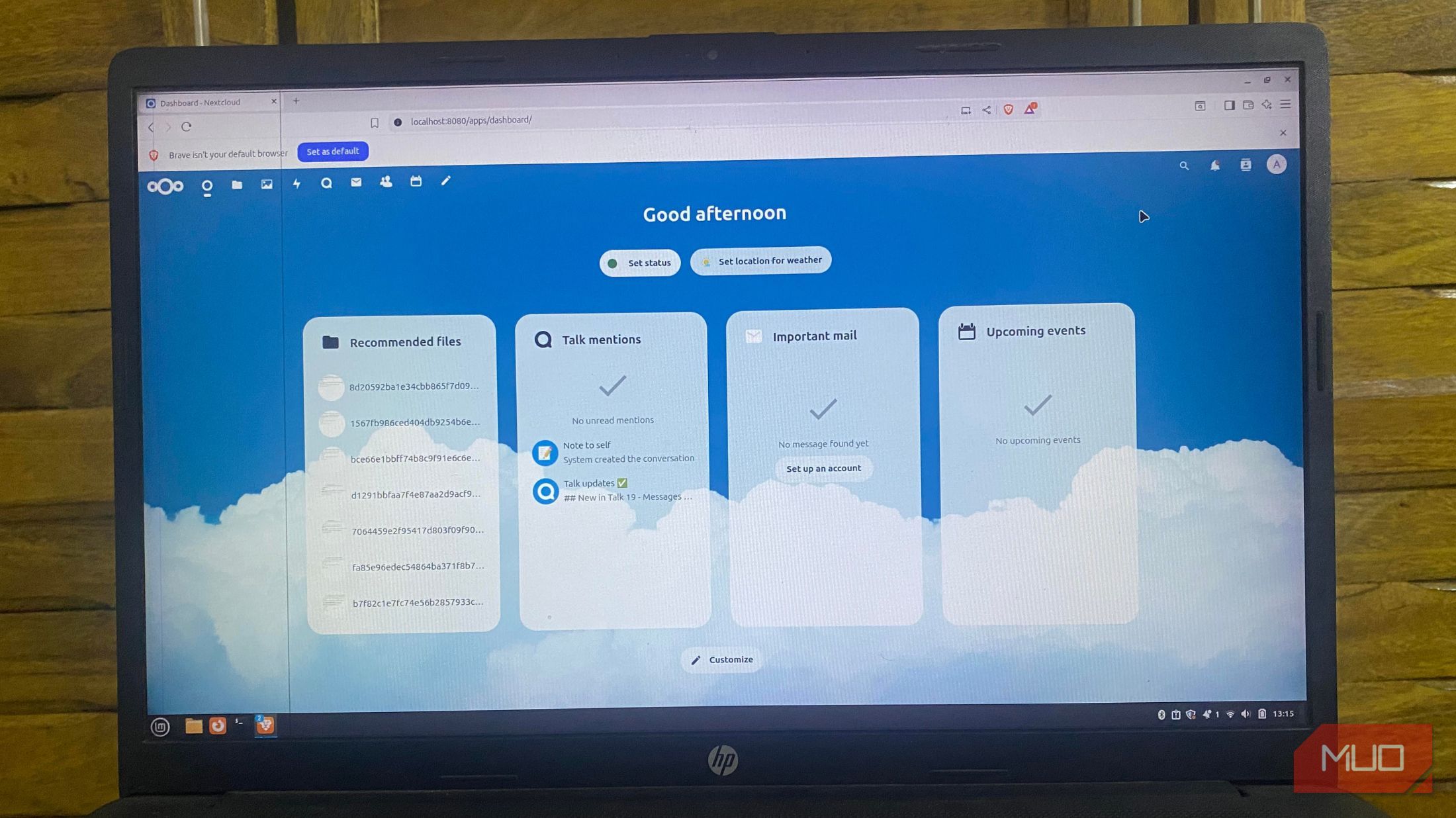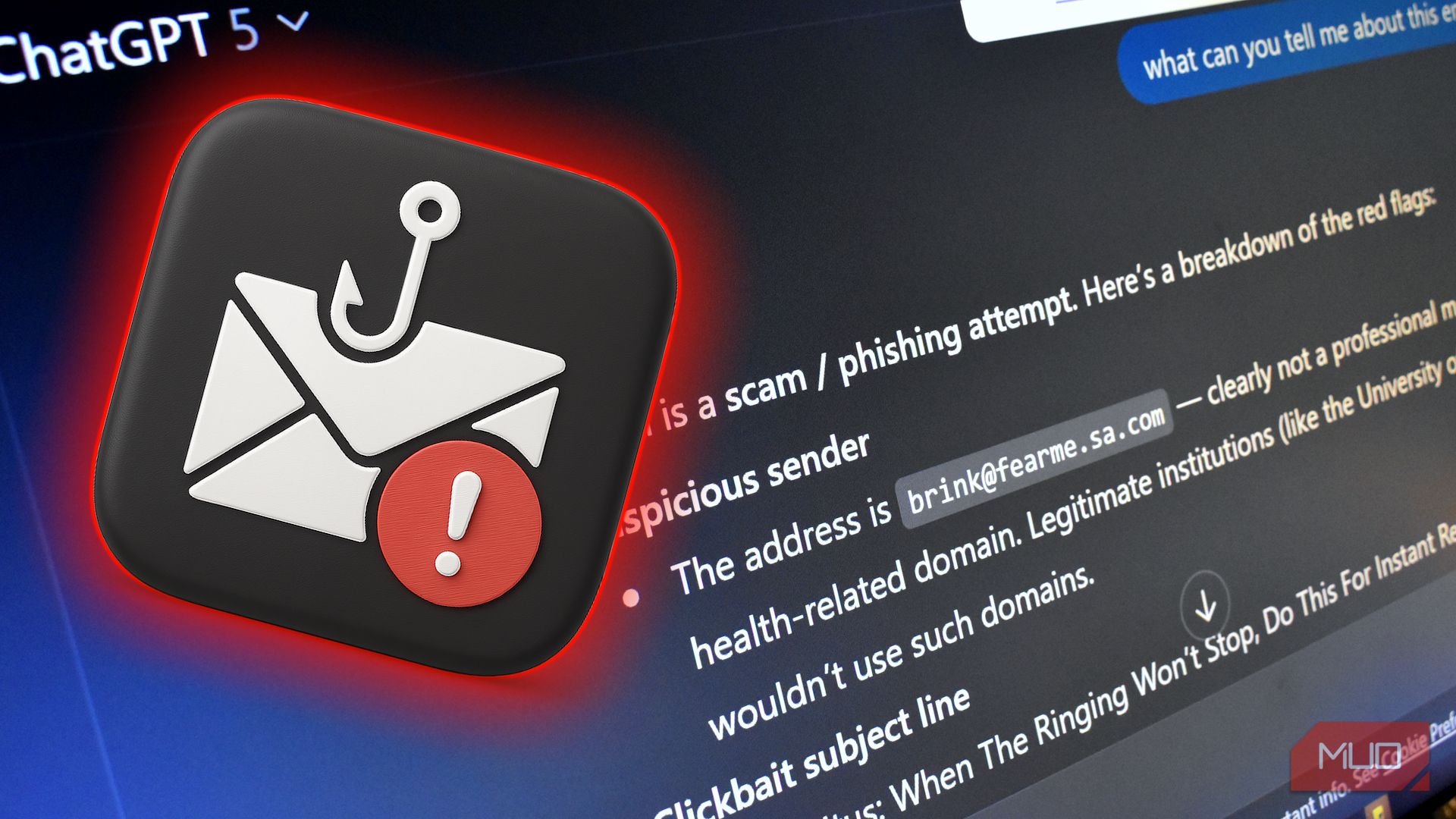I have had a love-hate relationship with Google Drive. It’s convenient and free up to a point. But it’s also Google — the giant monopoly and ad company — and I don’t like the feeling that I’m adding to the amount of information they already have about me. I always knew the day would come when I’d have to sever ties with Big Tech. I just didn’t know how until I discovered Nextcloud.
Making the shift wasn’t just daunting; it was a conscious choice to trade convenience for control. And the freedom that comes with it is worth every bit of effort. Nextcloud has changed how I think about files and storage.
I’m done with Google Drive
This is why I walked away from Google Drive
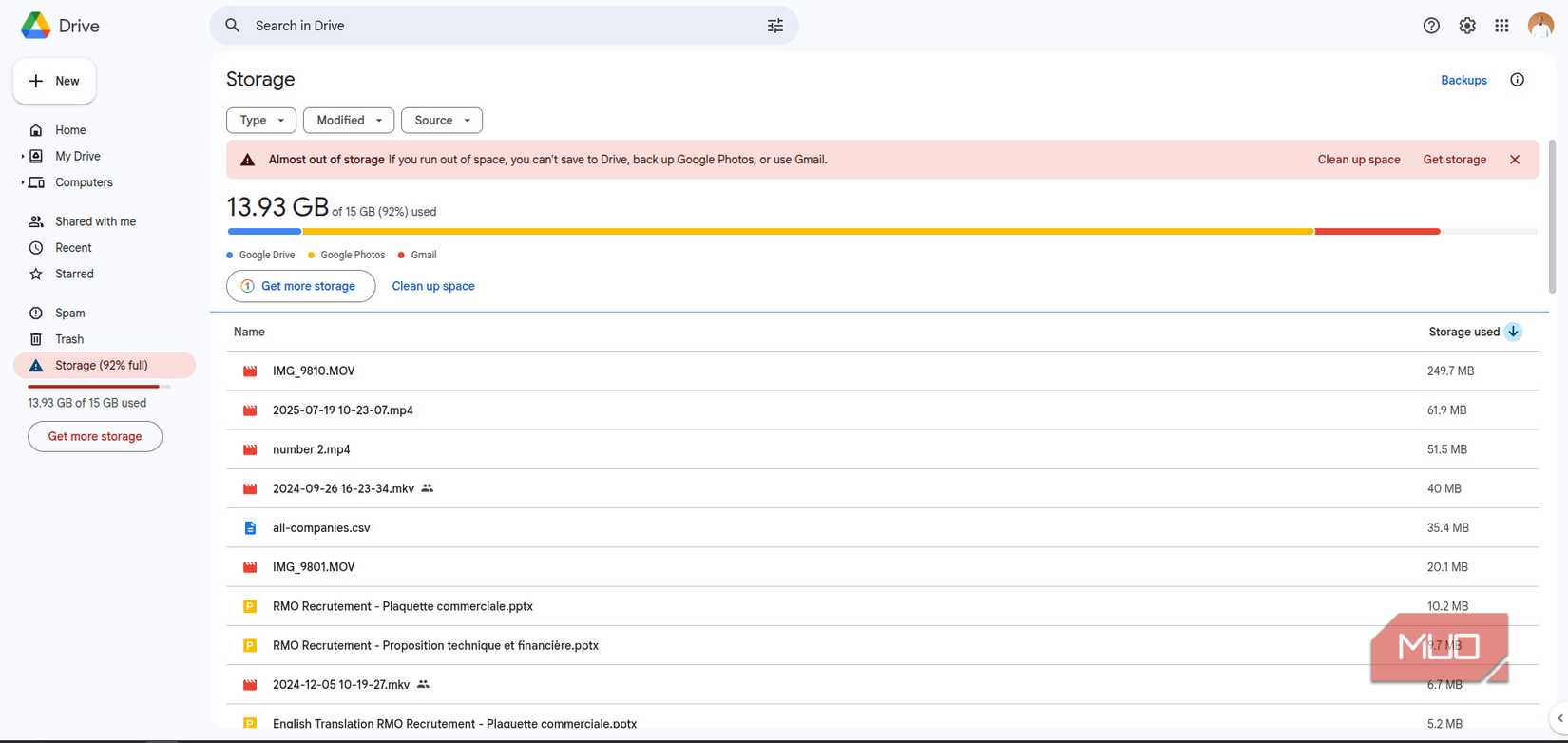
Google Drive’s free plan is capped at 15GB. But Drive isn’t made up of only files you intentionally save. Your Google Photos, WhatsApp backups on Android, Gmail data, and Google Meet call recordings contribute, and you can fill up the initial free 15GB quickly. At this point, it’s impossible to send or receive new emails, upload new photos, or create new Docs.
Your only options after you use it up are deleting files from Drive or paying the subscription fee. If you choose to delete files, you may find yourself needing to do it more often than you expected. It becomes tiring to keep up with this level of file management.
However, what pushed me to seek a self-hosting option was a matter of ideology. Things like my notes, important emails, documents, and conversations are very private. I’d rather be the custodian of this kind of data than outsource it to someone else, especially if it’s a closed-source alternative, whose code I can’t inspect or have a say in.
But there was also the matter of overreliance on Google. My world practically revolved around Google services: email, storage, search, browser, phones — it was all Google. So, moving away from Google storage was a vital first step in de-Googling.
The setup stress
Setting up Nextcloud on Linux Mint was surprisingly doable (with caveats)
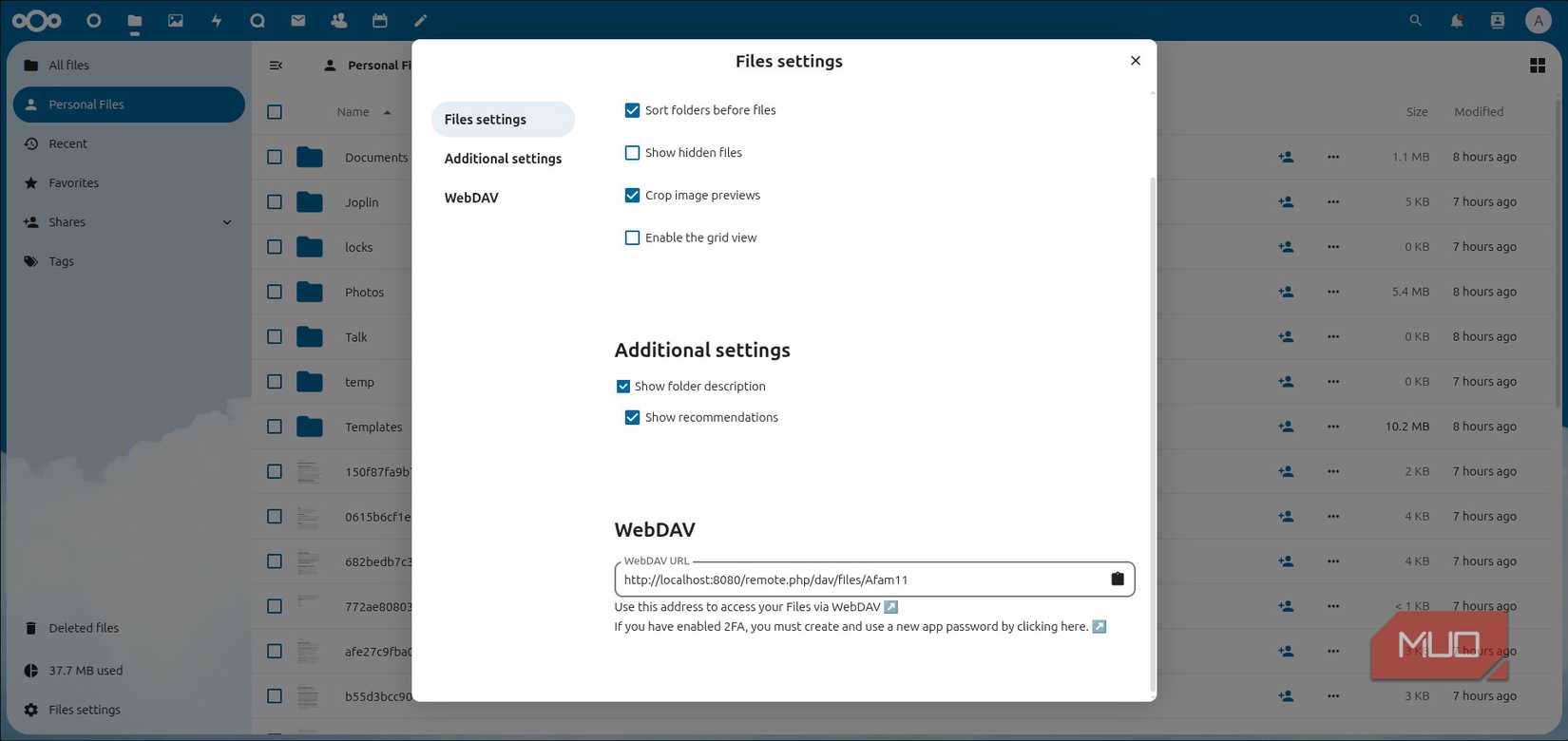
As I expected, installing Nextcloud on Mint was not plug-and-play. I first had to install Docker and Docker Compose, then create a Docker Compose stack for Nextcloud, MariaDB, and Redis. This ensures that all necessary Nextcloud components run together. Nextcloud itself is the application, but it needs a database (MariaDB) to store your data and a caching system (Redis) to speed up performance. Docker and Docker Compose create a consistent, isolated environment where all these services run. This process requires some familiarity with the command line.
However, I realized that the real roadblock wasn’t installing Nextcloud, but ensuring the server is securely accessible. Setting up Let’s Encrypt SSL certificates was the first true grown-up task of owning my cloud. On Google Drive, encryption is invisible to you, and you never really have to think about it.
I felt victorious when I got Nextcloud running, but then it meant I was the admin. Backups, updates, and troubleshooting were my responsibility, and this was true control that felt liberating.
My Nextcloud experience
Here’s what works and what doesn’t
The shift from convenience to control hits when you live with Nextcloud day to day. File syncing is reliable, but not invisible like with Google Drive. You’ll be able to see what’s updating or paused, and occasionally you’ll need to take manual action to resume syncing. This initially feels burdensome, but quickly becomes part of the ownership rhythm.
File sharing also makes the difference between Google Drive and hosting your own servers glaringly obvious. Google Drive allows you to share files by sending a link. But Nextcloud’s sharing is built around security and control first. When you create a share link, it immediately prompts you for options like password protection, expiration date, permissions, and visibility. It’s a welcome level of control baked in as a default.
One of the first things I did was host Joplin, my note app, on my Nextcloud server for free. Even though my server was running on Linux Mint, I was using the Joplin mobile and Windows apps to save notes and pictures, and it was seamless and liberating.
In the end, the subtle freedoms become surprisingly noticeable. Zero ads, no AI nudges, and no pop-ups suggesting upgrades. It’s a quieter, calmer experience with just your files and your choices.
Total cloud control
There is real satisfaction in owning my cloud
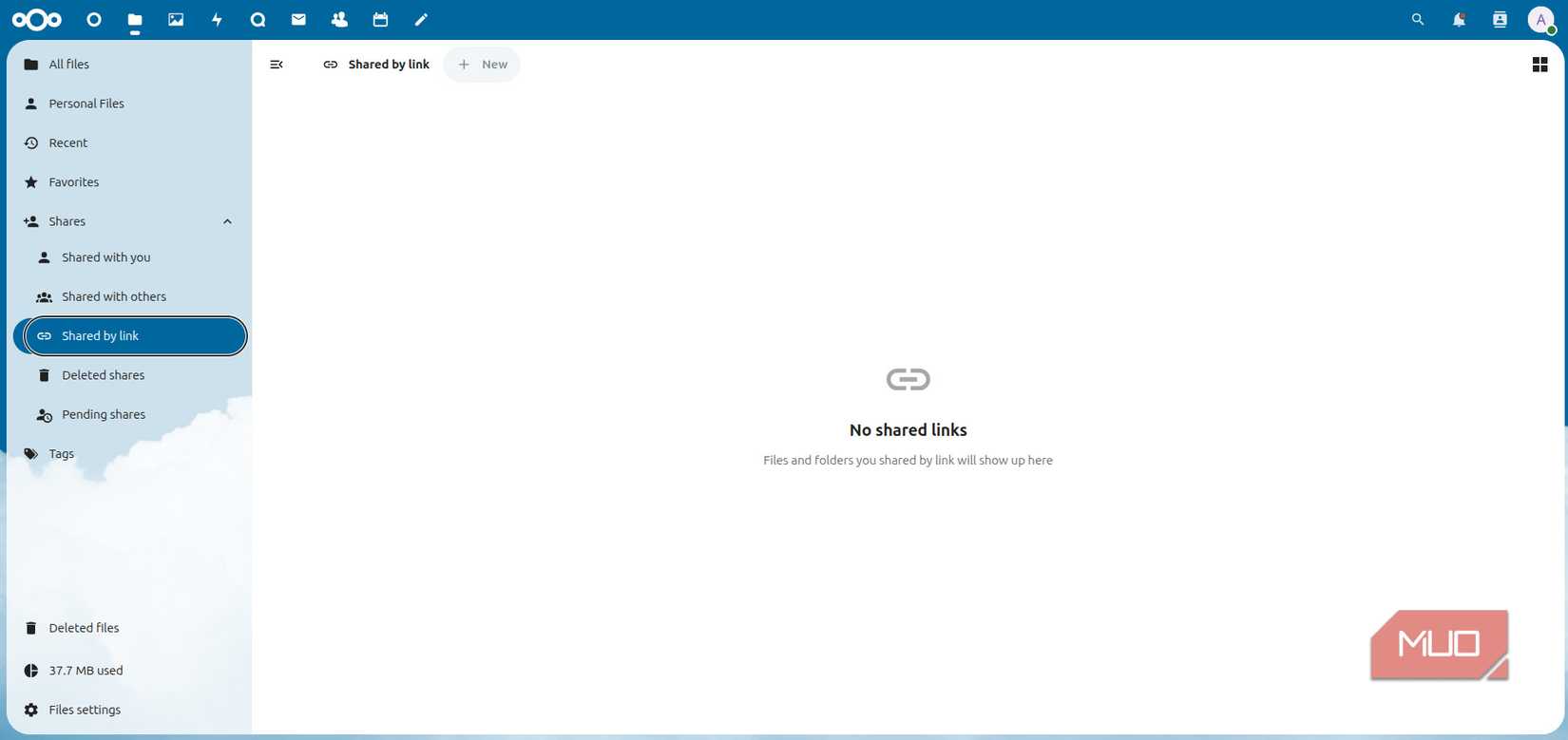
Everything I store — documents, notes, photos — is under my control. What this statement actually means is that I can set retention policies, run automated backups, and even configure storage quotas across different directories. I didn’t know I was missing this type of control until I started self-hosting.
I have a single hub for work and personal life because I integrate calendars, contacts, and tasks seamlessly with my desktop and mobile apps. I enable just the features I want without any upselling. I can customize as much as I want and even adjust sync intervals.
I’m certain no one scans, indexes, or analyzes the sensitive documents or family photos that I upload, and ultimately, this gives me real satisfaction.
This setup is not for everyone
After replacing Google Drive with my self-hosted cloud, the real question is: should you? Well, if you don’t have an old computer lying somewhere, you may have to invest in a server. In the long run, this will be cheaper than cumulative monthly subscription fees. You may save money over time, but you’ll invest more effort.
Google Drive is very convenient. It integrates with a lot of the other applications you use: Gmail, Google Maps, Photos, and more. You should only try self-hosting if you’re willing to trade your convenience for control. For instance, you should be willing to drop Google Maps for an open-source option, or look for other apps that fit well in a non-proprietary setup. But for me, this has been so worth it.





